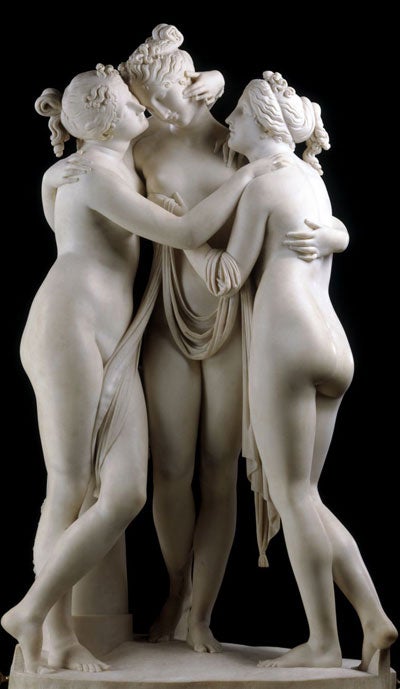Tate finds the modern in the classical

Your support helps us to tell the story
From reproductive rights to climate change to Big Tech, The Independent is on the ground when the story is developing. Whether it's investigating the financials of Elon Musk's pro-Trump PAC or producing our latest documentary, 'The A Word', which shines a light on the American women fighting for reproductive rights, we know how important it is to parse out the facts from the messaging.
At such a critical moment in US history, we need reporters on the ground. Your donation allows us to keep sending journalists to speak to both sides of the story.
The Independent is trusted by Americans across the entire political spectrum. And unlike many other quality news outlets, we choose not to lock Americans out of our reporting and analysis with paywalls. We believe quality journalism should be available to everyone, paid for by those who can afford it.
Your support makes all the difference.When Antonio Canova's Three Graces was unveiled at Woburn Abbey in 1817, it generated the sort of ambivalent enthusiasm that the Turner Prize does today.
It is fitting, then, that this erotic rendering of Euphrosyne, Aglaea and Thalia, the daughters of Zeus who embodied beauty, charm and joy, along with other daring neoclassical works, will feature in Tate Britain's Duveen Galleries. The reason is that these rooms are better known as a showcase for today's ground-breaking works such as State Britain, the Turner-prize winner Mark Wallinger's anti-war installation.
Canova and his rivals worked during the "heyday of sculpture", the late 18th and early 19th centuries as neoclassicism peaked before giving way to Gothic romanticism. They were regarded as revolutionary pieces which, with hindsight, can be seen as preparing the ground for what was to follow.
Unveiled at the time with fanfare and lit by candlelight, they were adored by art aficionados both for their virtuoso treatment of sculpture, which captured the power and grace of the ancient world, and their highly modern aspects.
In the first major UK show to focus on neoclassical sculpture since 1972, Tate Britain will re-examine the significance of this genre. Opening on 28 January, Return of the Gods will unite around 30 of the most important pieces from across the world.
Marjorie Trusted, co-curator of the exhibition, said their popular appeal in the late 18th century should not be underestimated. "Sculpture was the most dominant art form," she said. "It's what people wanted and they were immensely moved by it.
"The works, when they were revealed, created an emotional response. The nearest analogy today is with the Turner Prize. They were rivalling ancient Roman and Greek sculpture, but they were not copies. These sculptors were saying: 'Look, this is what we can do'."
The show brings together works commissioned by British patrons in the hundred years from 1760 to 1860, most of which were carved in Rome. They have been loaned from galleries including the Getty in Los Angeles, the National Galleries of Scotland and the National Museum of Stockholm.
Invariably monumental in size, they were regarded as an "international phenomenon", according to the Tate. Following the discovery of the ruins of Pompeii in 1748, large collections of neoclassical sculpture were amassed by aristocrats and other Grand Tourists, who visited Rome to round off a classical education.
When Canova's Three Graces was unveiled, it was recorded as a profoundly moving experience. It was hailed as being "unsurpassed by any modern specimen in the art of sculpture".
Artists such as Canova, Joseph Wilton, Thomas Banks and Joseph Nollekens were regarded as the Turner-esque mavericks of their day. They exploited unexplored subjects from the classical world to depict the nude with a modern sensuality and freedom. The artists used sculpture to observe the body closely and portray it in new ways. The faces and hairstyles, poses and expressions were all seen to reflect the "modern" of the time.
In particular, for example, a bust by Francis Harwood was daring in how he went contrary to the tradition of the day in not depicting the face of an anonymous black figure as "the other", or a slave, but as an ordinary man. This feature piece of the Tate's show was genuinely startling to its public at the time.
Works also on display include Banks' Thetis Dipping Achilles into the Styx, and Nollekens' Venus Chiding Cupid and Mercury.
Join our commenting forum
Join thought-provoking conversations, follow other Independent readers and see their replies
Comments